Bordeaux, a city in southwestern France, is the capital of the Nouvelle-Aquitaine region and the prefecture of the Gironde department. Bordeaux is a vital industrial and commercial hub in southwestern France and serves as the region’s political, economic, cultural, transportation, and educational center.My trip here is driven by my admiration for France, and it’s also one of the most convenient French cities to reach from Madrid.
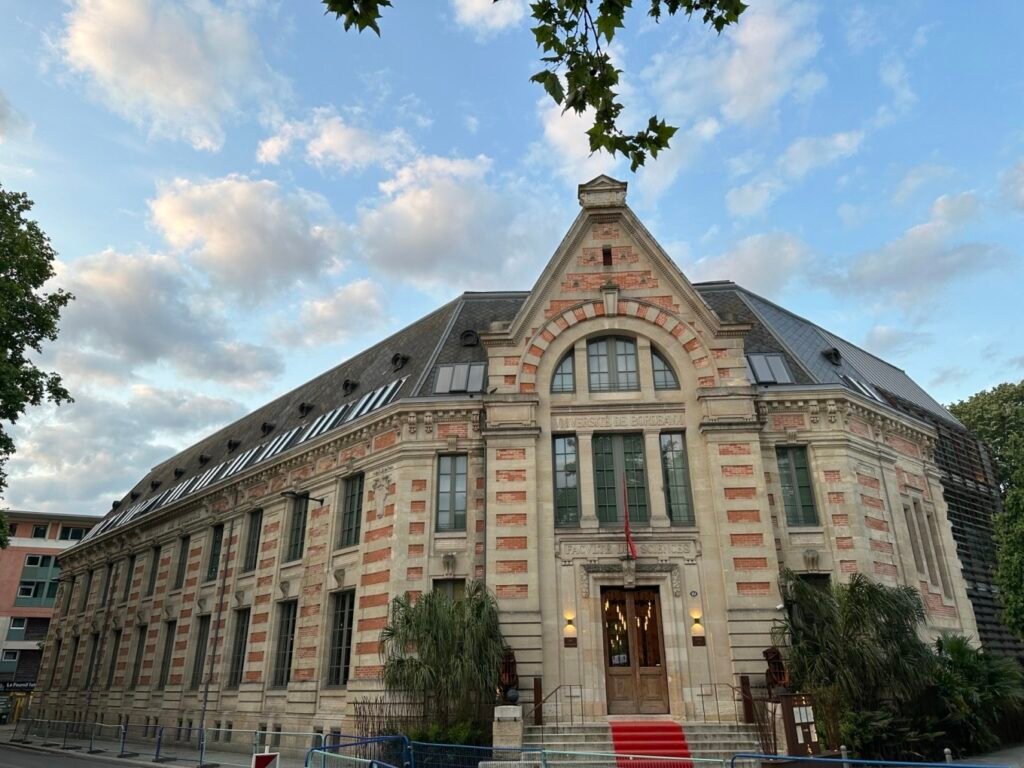
This building stands out prominently in the middle of the street, with “Université de Bordeaux, Faculté des Sciences” written on the main facade in French. However, this old building has been transformed into a four-star hotel called Hotel La Zoologie Bordeaux.
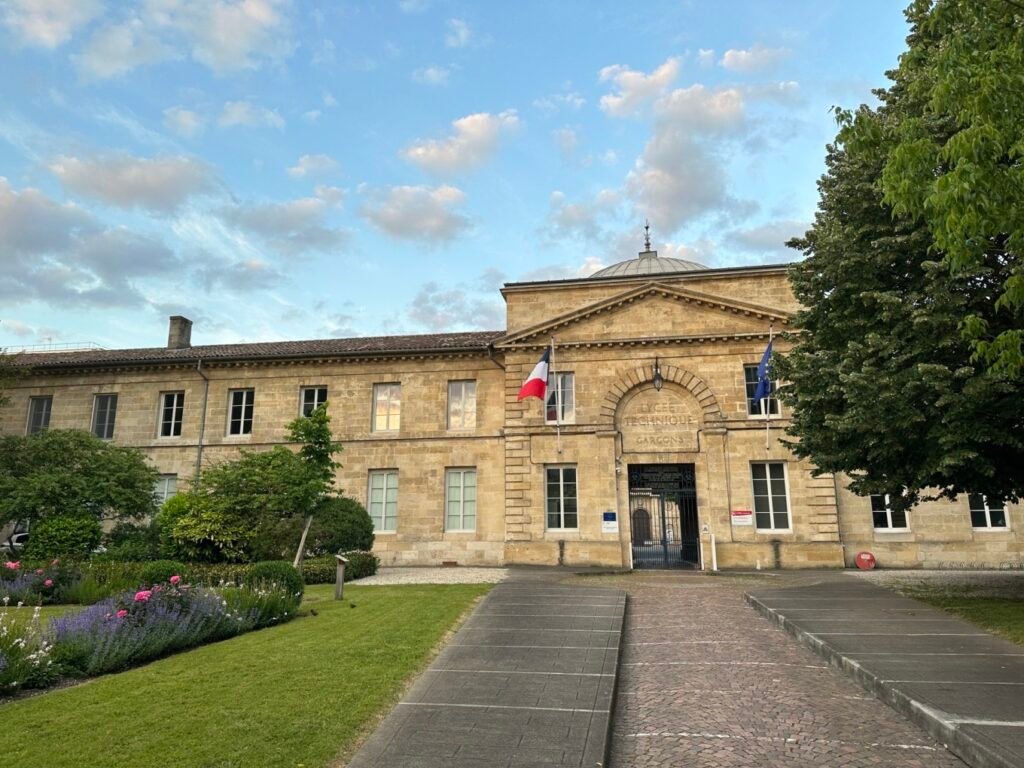
This is a school named after Gustave Eiffel. Gustave Eiffel was a famous French designer, known for his most outstanding work, the Eiffel Tower. Additionally, the internal support structure of the Statue of Liberty in the U.S. was also designed by Eiffel.
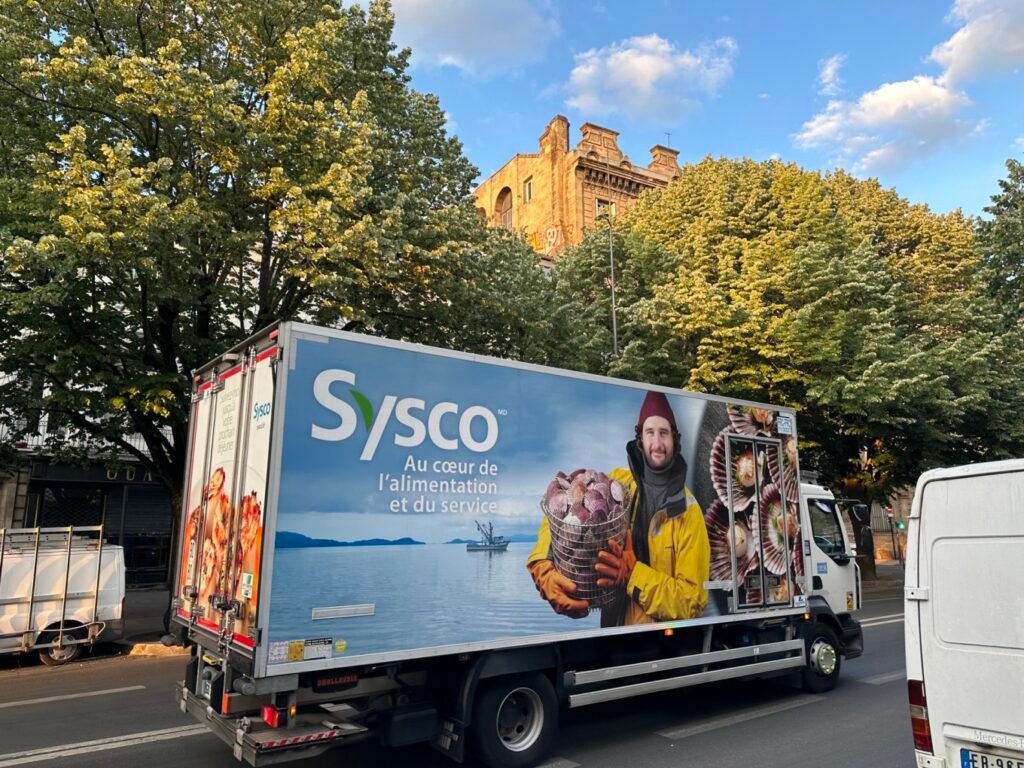
Sysco, founded in 1969, is a major American company in the food distribution industry, dedicated to providing top-notch ingredients. Bordeaux is known for its mussels, and the ads on vehicles made me really curious about the seafood here.

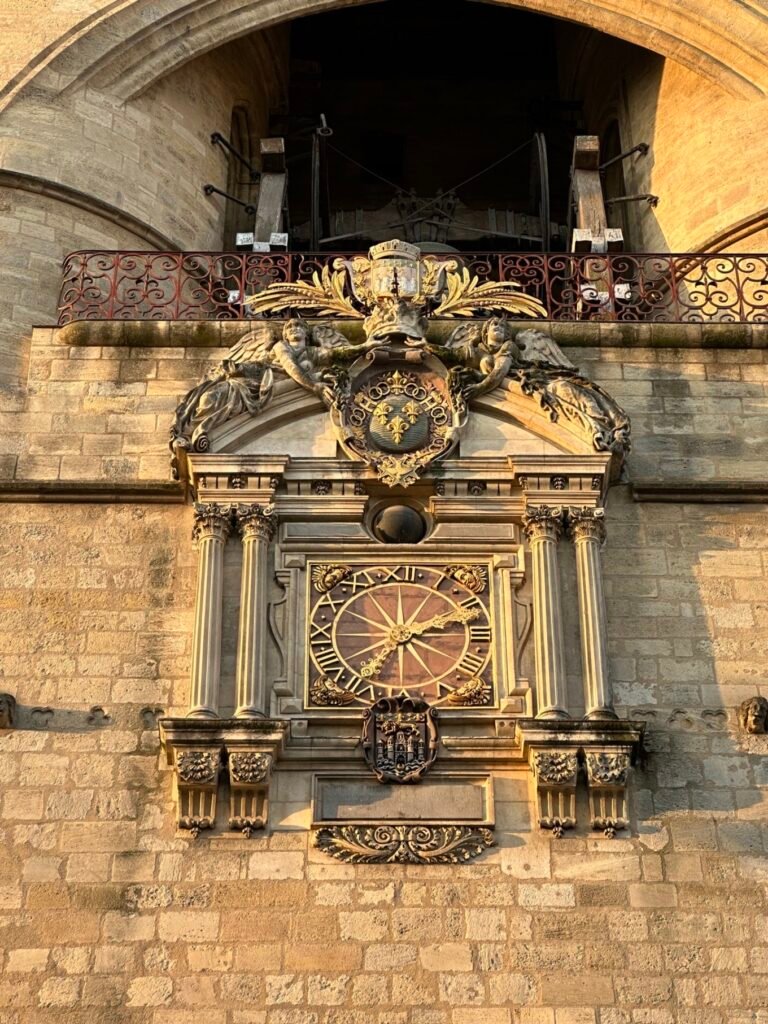
The Bordeaux Bell Tower, built in the 15th century, consists of two 40-meter-high towers connected in the middle. It was the bell tower of Bordeaux’s old town hall and was used to ring alarms during fires to warn citizens. The golden crest and clock face in the middle of the tower sparkle in the morning sun.
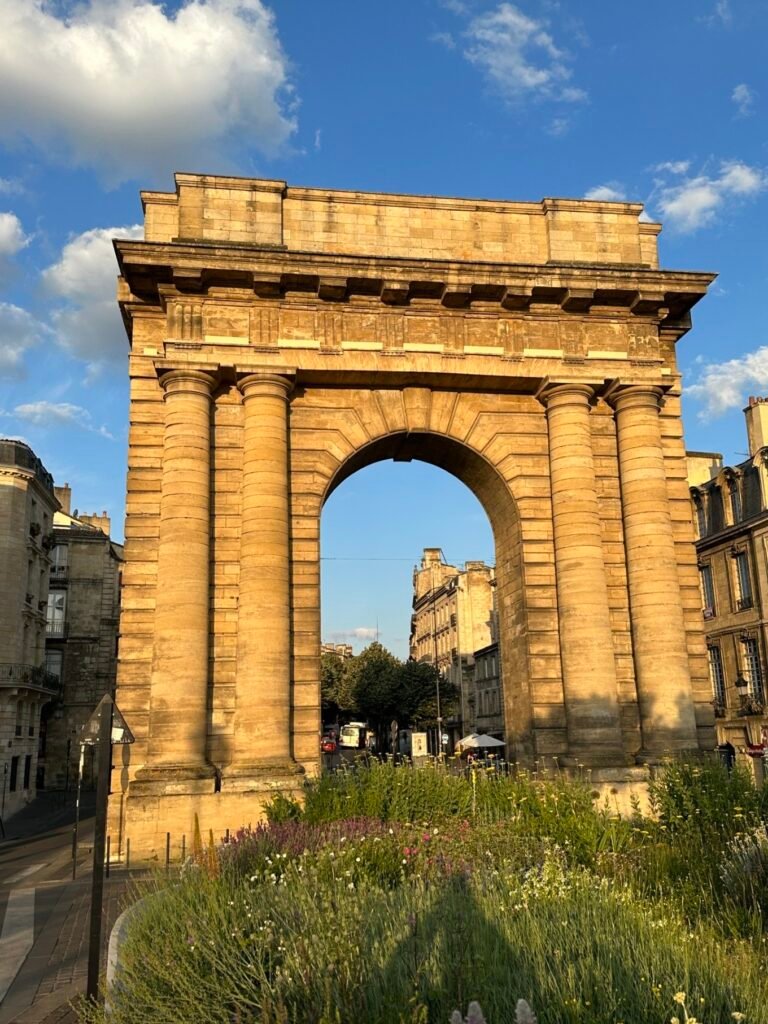
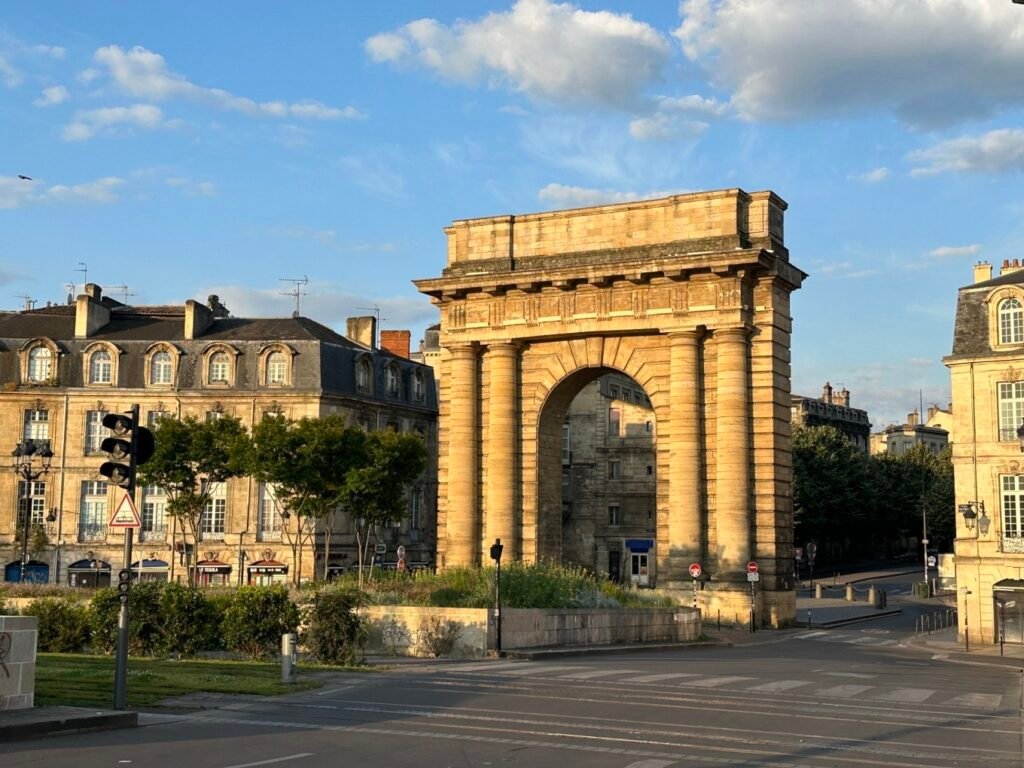
The Porte de Bourgogne, built between 1750 and 1755, looks quite similar to the Arc de Triomphe in Paris. It’s Bordeaux’s version of a triumphal arch.

Canelés originated in the 16th century in Bordeaux’s monasteries and were invented by French nuns as an afternoon tea treat. The main ingredients include milk, egg yolks, flour, vanilla powder, and rum. They come in three sizes: large ones cost 0.7 euros each, medium ones 0.5 euros, and small ones 0.4 euros. Freshly baked canelés taste pretty good.
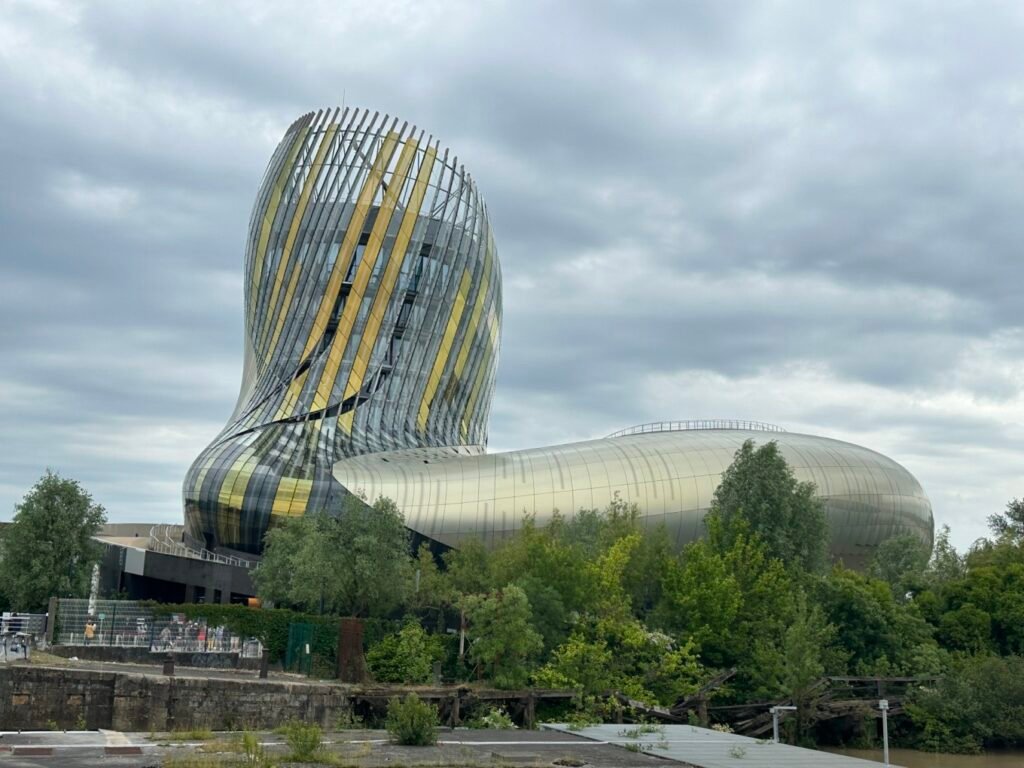
This uniquely shaped modern building is the famous Bordeaux Wine Museum. Its exterior resembles a giant decanter, with vibrant and fluid lines that evoke the swirling of red wine when poured into a decanter. The design reflects its deep connection with wine culture and is truly unforgettable.

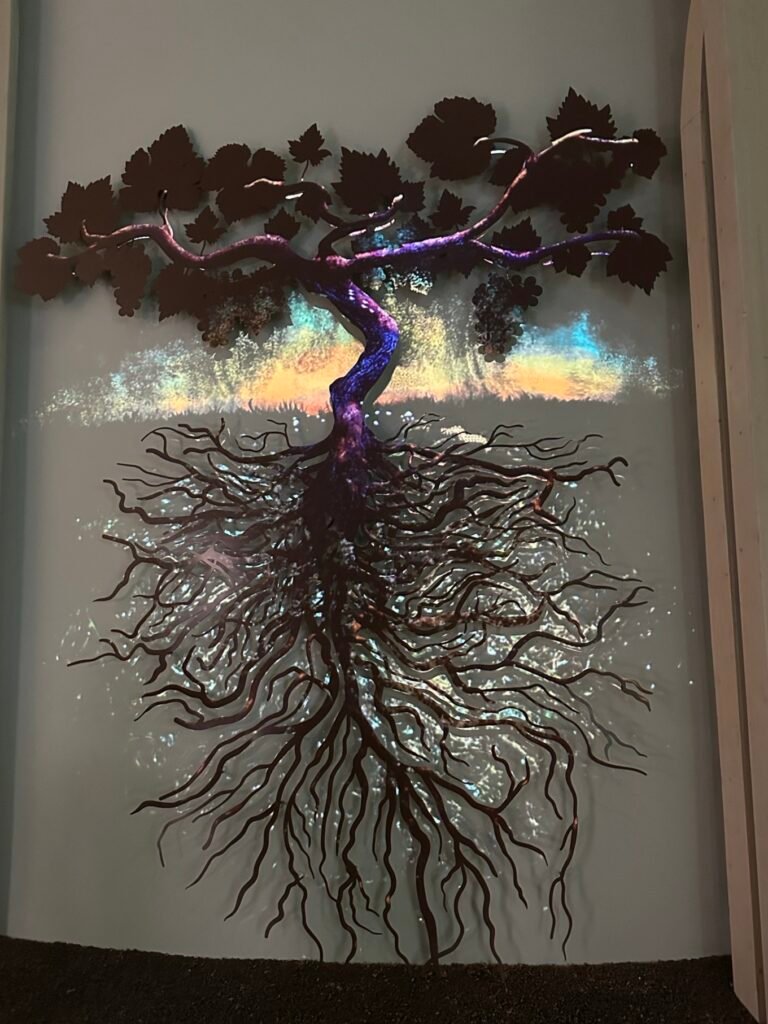
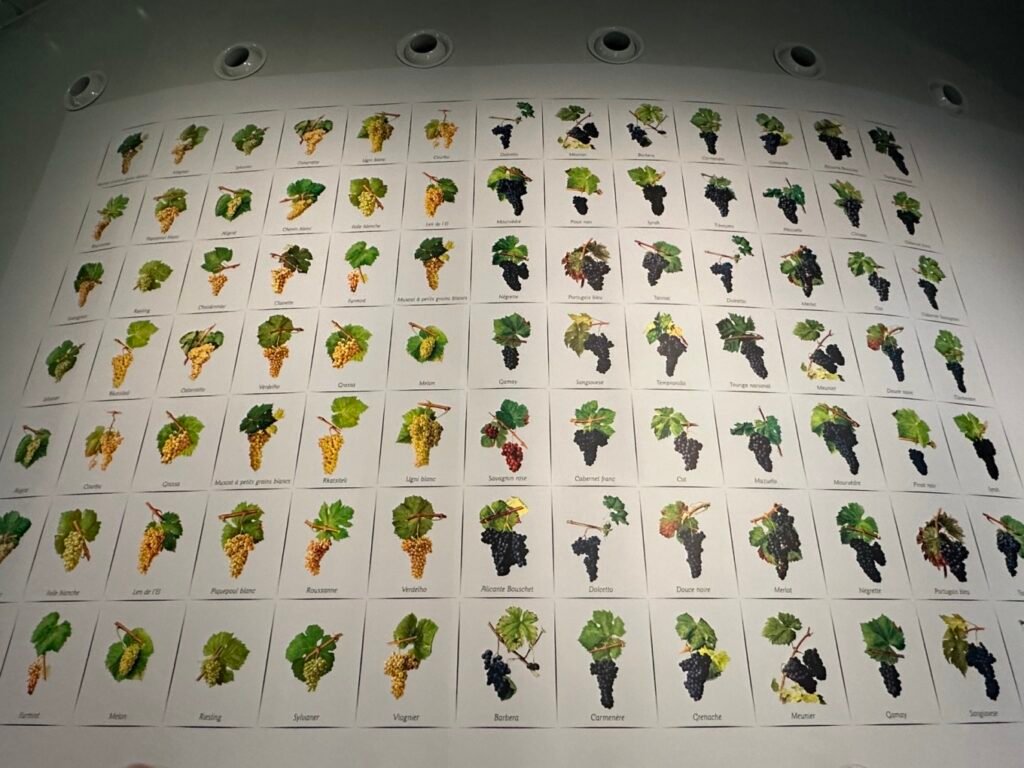
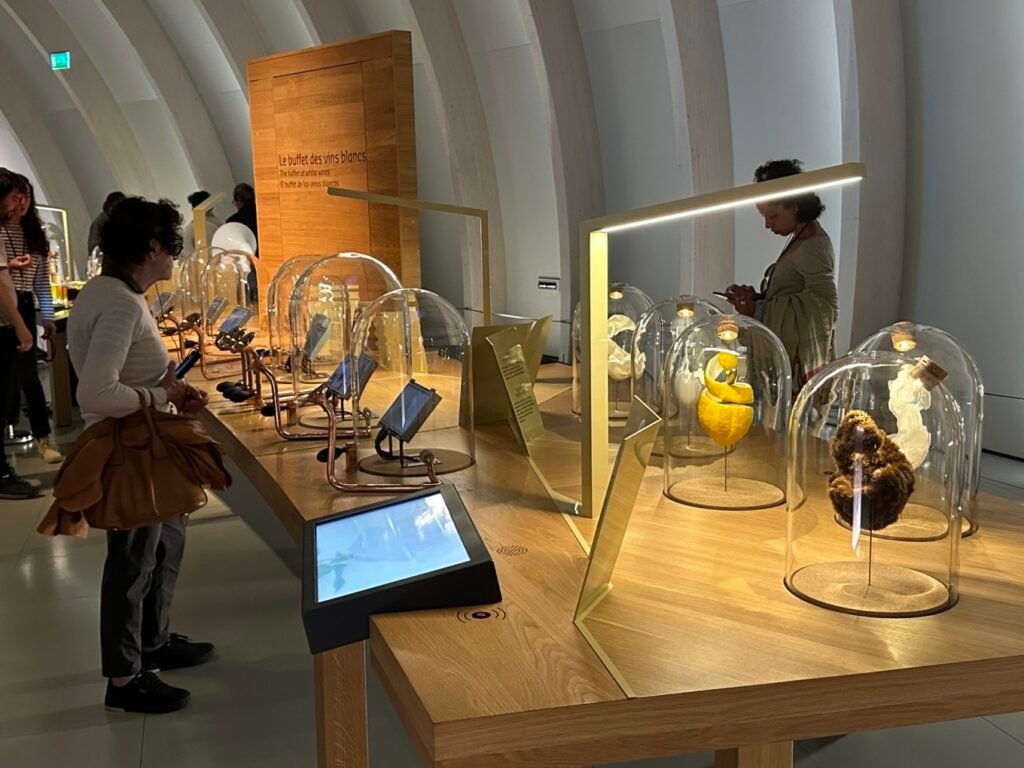
This wine aroma tasting area is the most distinctive and interesting part of the museum. Visitors can use their sense of smell to identify the unique scents and aromas present in different wines.
Bordeaux’s wineries and vineyards are primarily distributed along the Left Bank, the Right Bank, and the area between the two rivers. The world-renowned five First Growths—Lafite, Latour, Mouton, Margaux, and Haut-Brion—are concentrated on the Left Bank. Except for Haut-Brion, located in Pessac-Léognan, the other four are in the Médoc region.
Today, we visited five renowned wineries in the Médoc region: Lafite, Latour, Mouton, Margaux, and Château Pichon Baron. Among them, the first four are globally recognized top-tier wineries.
The first stop was the famous Château Lafite Rothschild, known worldwide. The vineyard was abundant with ripe grapes, a delightful sight for us.
Château Lafite Rothschild
The estate’s flagship wine is its red wine, distinguished by its almond and violet aromas. According to data from the international wine exchange Liv-ex, from 2010 to August 2015, Lafite had the highest market share among Bordeaux’s five First Growths. However, despite its leading sales volume, prices have declined in recent years, possibly due to a decrease in market demand.
Years with perfect scores: 1986, 1996, 2003, and 2010.


Our second stop was Château Latour. At the estate, we met a German couple, the Braunnauts, who arrived by bike—an admirable effort.
Château Latour is often referred to as “the world’s most expensive winery.” It owns 78 hectares of vineyards and is now under the control of François Pinault, the owner of France’s renowned Printemps department store group. Renowned British wine critic Hugh Johnson once remarked: “If Lafite is a tenor, Latour is a bass; if Lafite is a lyrical poem, Latour is an epic.”
Latour was mentioned in 14th-century documents, though it was not yet a vineyard at that time. It wasn’t until the 16th century that the land was developed into a vineyard. In 1670, it was purchased by de Chavannes, the private secretary of King Louis XIV. In 1677, the estate became the property of the de Clausel family. When Marie-Therese de Clausel married Alexandre Marquis de Ségur in 1695, Latour came under the management of the Ségur family, who also owned renowned estates like Lafite and Mouton. The family managed Latour for nearly 300 years.
In the late 18th century, Latour separated from Lafite due to inheritance matters, embarking on its own illustrious journey. By the mid-19th century, Latour wines became highly sought-after, with prices soaring, marking the winery’s golden age. In 1963, two of the three families controlling Latour—Beaumont and Cortivron—sold 79% of the estate’s shares to two British groups, Pearson and Harveys of Bristol. In 1989, Alliance Lyonnais, which owned Harveys, bought back Pearson’s shares, returning Latour to French ownership. Finally, in 1993, François Pinault acquired controlling interest in Latour for 720 million francs.
Latour’s flagship wine is known as Grand Vin de Château Latour. This wine is renowned for its robust, full-bodied character, with intense flavors of blackcurrant and subtle black cherry notes. Among the classified growths of Médoc, it stands out as a “tough guy,” offering a powerful and stimulating experience. After aging for over a decade, it evolves into a mature and complex “gentleman” with captivating depth and character.


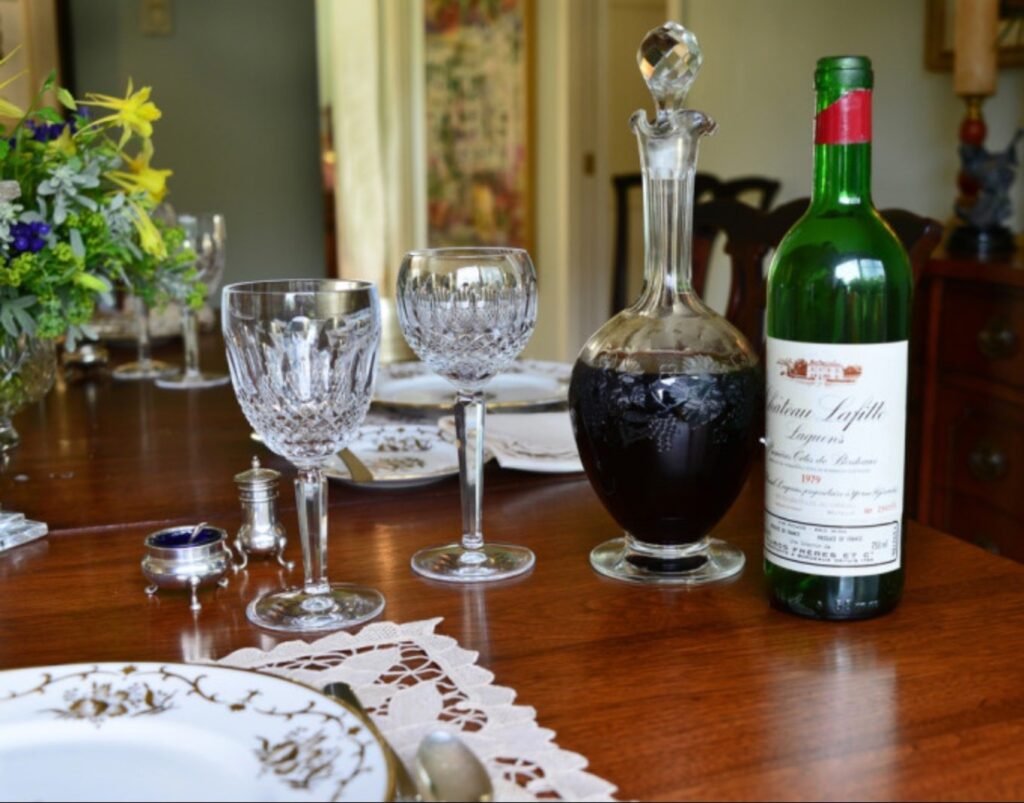

Our third stop was Château Mouton Rothschild. The red wine from this estate offers a distinctive style, falling somewhere between the profiles of Château Lafite and Château Latour. It is known for its intense aroma, often featuring bold coffee notes. In exceptional years, the wines boast a full-bodied structure, a long-lasting finish, and remarkable purity, leaving a graceful impression.
Château Mouton Rothschild blends tradition with modern technology in its winemaking process. After harvest, the grapes are meticulously processed, followed by fermentation and aging in oak barrels for over 18 months, which enhances the wine’s richness and complexity.
For wine enthusiasts, Mouton Rothschild wines are more than just a drink—they are works of art. These wines are not only enjoyable for tasting but also hold significant value as collectibles. If you appreciate fine wine, tasting a bottle from Château Mouton Rothschild is an excellent way to explore its layers of flavor and distinctive charm.

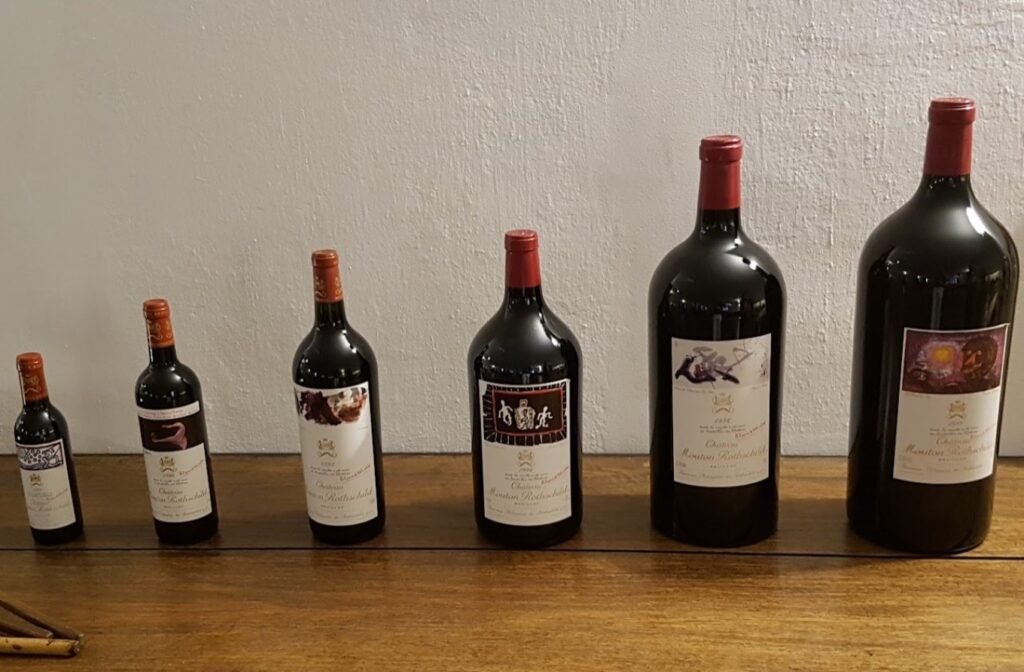



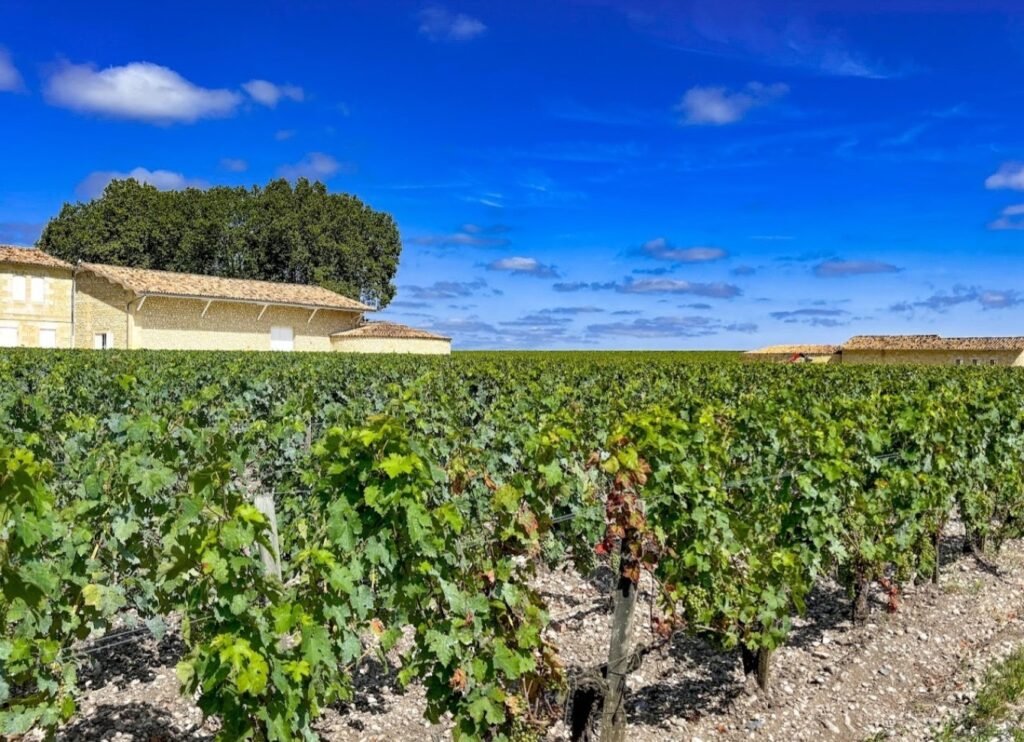
Our fourth stop was Château Margaux. If any of the five premier grand cru wines were to embody feminine elegance, it would undoubtedly be Château Margaux. This renowned estate, located in the Margaux village of the Médoc region, covers 262 hectares, with approximately 90 hectares dedicated to vineyards.
The estate’s wines have a prestigious history, with former U.S. President Thomas Jefferson once naming Château Margaux the finest among Bordeaux’s top five estates. Today, the winery is managed by Corinne Mentzelopoulos. In addition to its celebrated red wines, the estate produces a dry Sauvignon Blanc—Pavillon Blanc du Château Margaux—which undergoes seven to eight months of oak maturation before bottling.
Since 1997, Château Margaux has also introduced a third-label wine, Margaux de Château Margaux, crafted from grapes that don’t meet the strict selection criteria for the grand or second wines. While its market share has recently lagged behind the other four premier crus, the prices of Château Margaux wines have remained relatively stable, even seeing a slight decline.


Our fifth visit was to Château Pichon Baron, a renowned second-growth estate from Bordeaux. Located in the heart of the Pauillac appellation on Bordeaux’s Left Bank, it sits next to the prestigious first-growth estate Château Latour.
In the 1855 Bordeaux Classification, Château Pichon Baron earned the title of a second-growth, but due to its exceptional quality and aging potential, it is often regarded as a “super second” among wine enthusiasts. Many wine lovers consider its wines on par with the first-growths, drawing a devoted following over the years.




